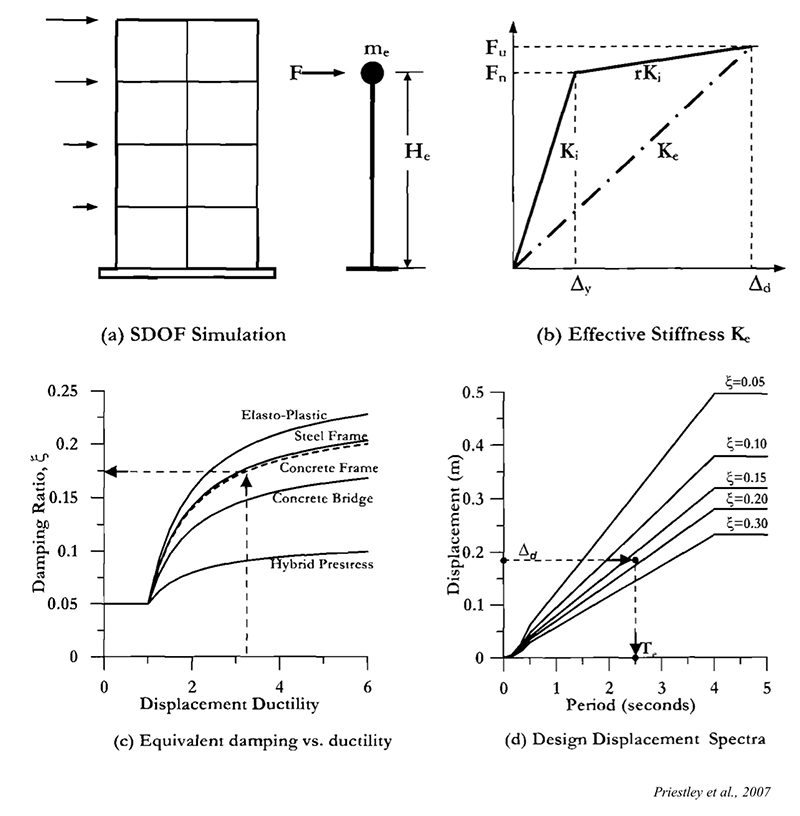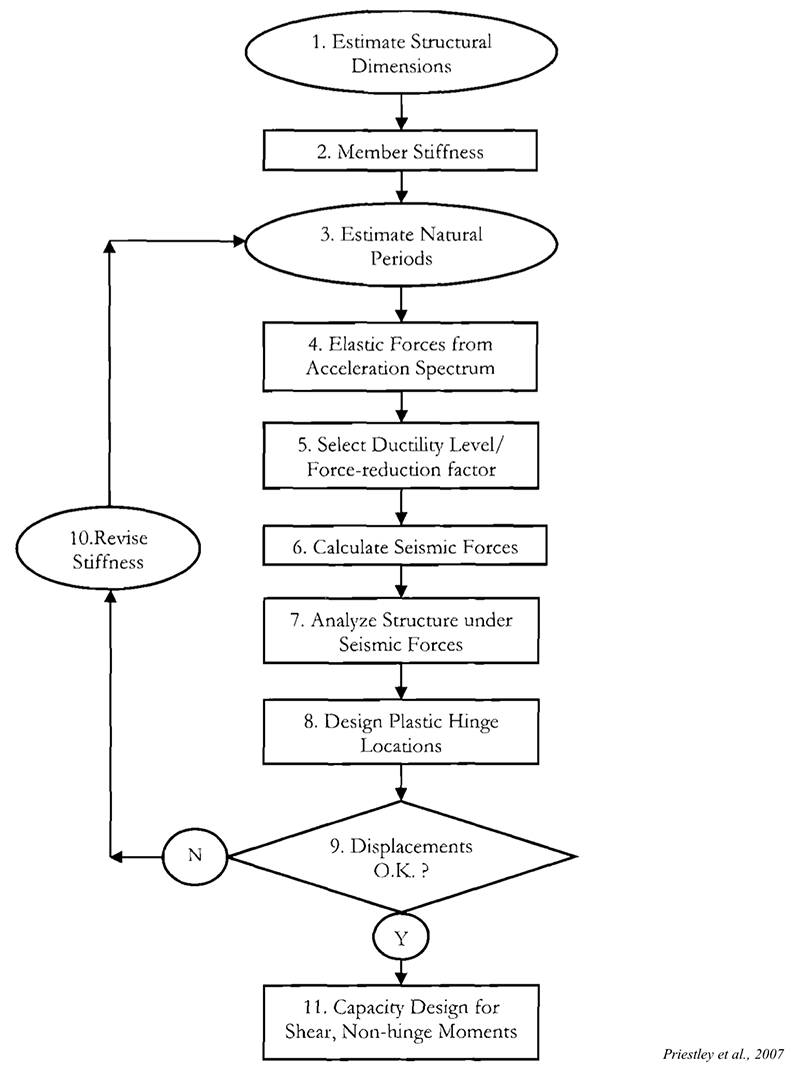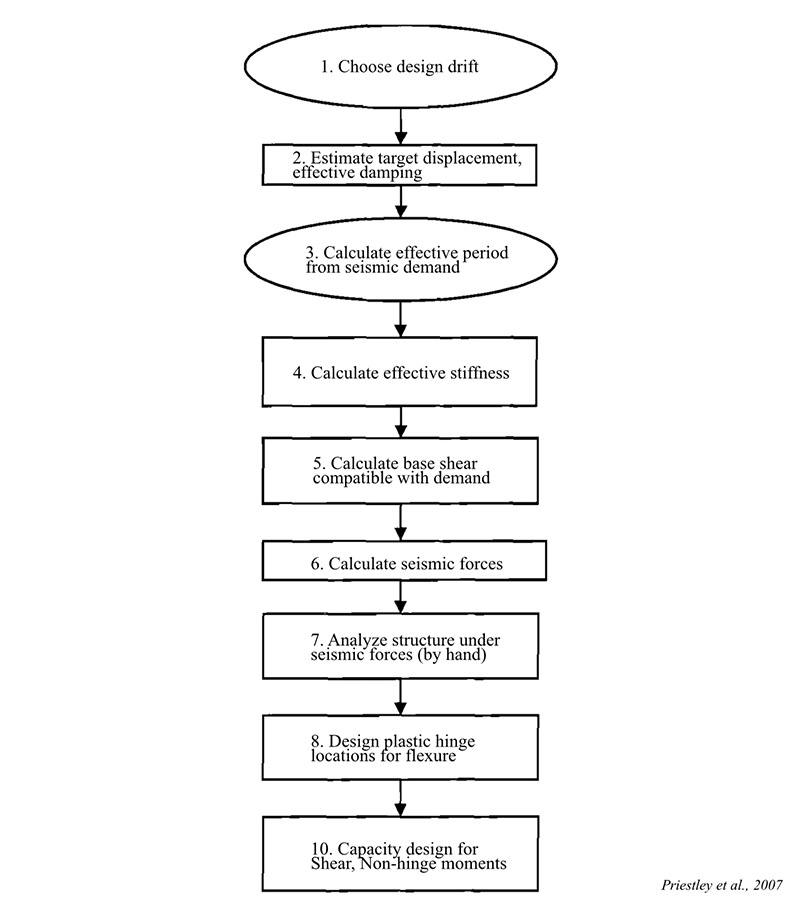Displacement-Based Design
 I gained experience with the displacement-based seismic design of structures (especially RC). As explained below in some detail, this is a much more rational design method compared to traditional force-based design. This allows to have a more controlled and efficient structural behaviour and, often, a cheaper design.
I gained experience with the displacement-based seismic design of structures (especially RC). As explained below in some detail, this is a much more rational design method compared to traditional force-based design. This allows to have a more controlled and efficient structural behaviour and, often, a cheaper design. Force-Based Design
The traditional and mostly-adopted seismic design method is Force-Based Design (FBD), since seismic forces are considered as the basis of the design. Basically, members are pre-designed based on gravity loads (for example). Based on the elastic stiffness (period) of the structure, the seismic force demand is calculated from the elastic response spectrum. Therefore, this is reduced based on a displacement equality rule. For example, the equal-displacement rule states that the peak displacement demand on a non-linear Single Degree of Freedom (SDOF) structure is equal to the peak displacement of an elastic SDOF with the same elastic stiffness. Based on such rule, the seismic force demand is reduced and the structure is designed.
Displacement-Based Design
However, for RC and masonry structures, the stiffness is dependent from the strength of its members. This means that if the strength is not known at the beginning of design, the stiffness cannot be known. Therefore, the period of vibration is not accurate and, in turn, the seismic demand. This means that FBD is, in principle, an iterative procedure. Moreover, it is demonstrated that the same displacement equality rules are not applicable regardless of the structure type and construction material.To overcome such inconsistencies (and others), the Direct Displacement-Based Design (DDBD) was developed by Priestley (see for example Priestley et al., 2007). The method is focused on displacements rather than forces. In fact, if a structure is to be designed allowing for controlled damage to develop, it is demonstrated that displacements are much more representative of the real behaviour with respect to forces.
 DDBD starts from selecting an appropriate displacement level for which the structure is to be designed. This gives the designer much more control over the expected behaviour of the structure, in relation to limits from the code or from the performance of the materials. The energy-dissipation capacity of the structure is calculated with relationships calibrated for each different construction type. Therefore, based on the seismic demand, the effective period corresponding to the chosen displacement is retrieved. This corresponds to a value of the structural stiffness and, in turn, to the base shear demand. Finally, the structural members are designed to comply with the calculated demand and to comply with a favourable plastic mechanism. Finally, capacity design is carried out to guarantee that brittle failure modes are prevented.
DDBD starts from selecting an appropriate displacement level for which the structure is to be designed. This gives the designer much more control over the expected behaviour of the structure, in relation to limits from the code or from the performance of the materials. The energy-dissipation capacity of the structure is calculated with relationships calibrated for each different construction type. Therefore, based on the seismic demand, the effective period corresponding to the chosen displacement is retrieved. This corresponds to a value of the structural stiffness and, in turn, to the base shear demand. Finally, the structural members are designed to comply with the calculated demand and to comply with a favourable plastic mechanism. Finally, capacity design is carried out to guarantee that brittle failure modes are prevented.